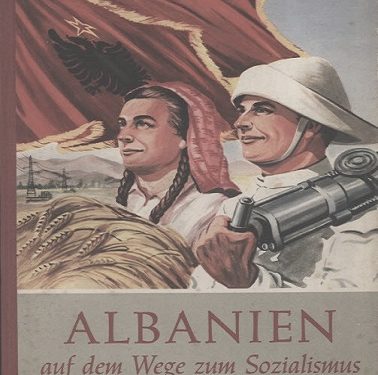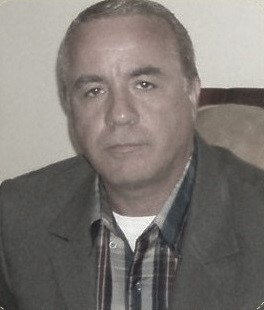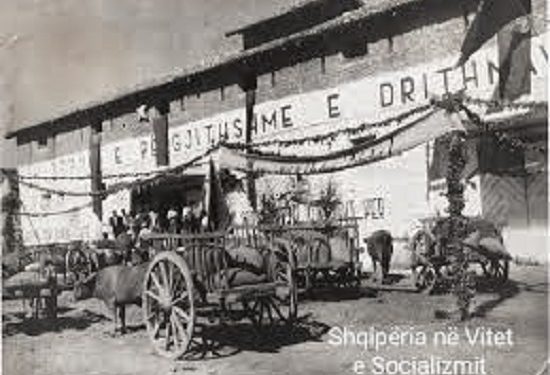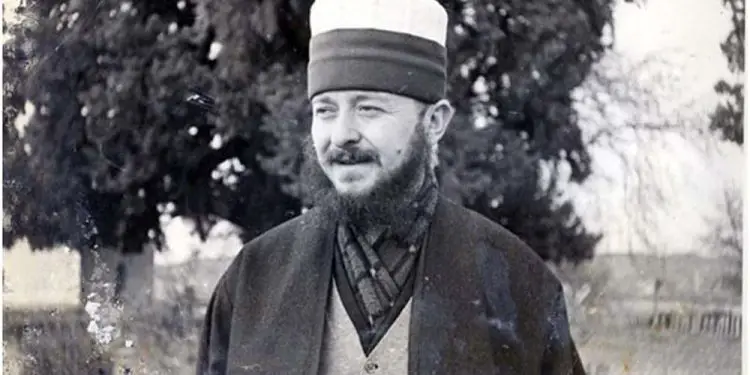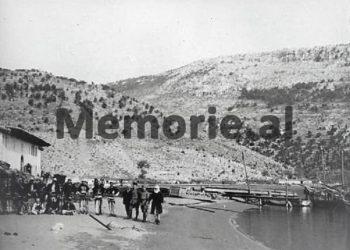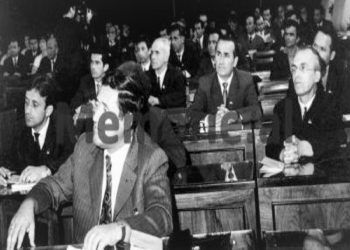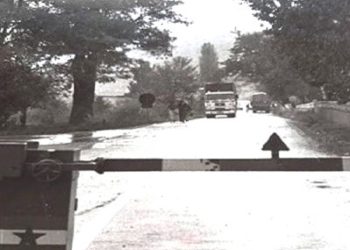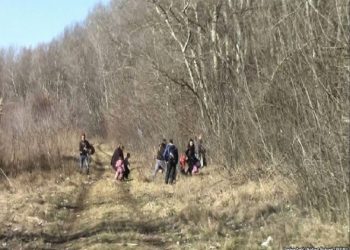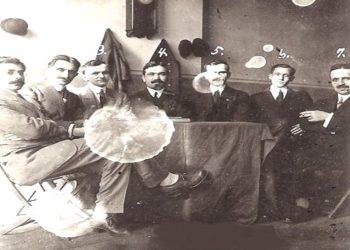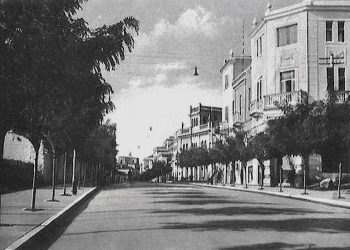By Gëzim Llojdia
The newspaper “Flamuri” in the 50s denounced: “The sky opened, the clouds fled, freedom does not die”, “Long live Christ the King”!
Memorie.al / 1. Somewhere I read an interesting article with this title: “Fields of wheat, hills of blood”, which as far as I remember is about those people who fled in peacetime, that is, those who fled without knowing why and from the hand of the Albanian. So as the wheat waved across the fields, the hills of violence rose. What is called terror, they did not talk about rifles thrown around the city. After the liberation, he read of people falling in the streets where, from the coldness of the bullets, they hit under the human flesh of political opponents who had come out of the war. The nights are tired of murders. Chronicles are boring today from repeating them. Instead of continuing life, doing it was madness, which spread through the cities and streets of Albania. The lives that came with hardship through the poor Albanian families through gray centuries, surprisingly escaped every day in the land they had fought for generation after generation, but the spirit of a people never dies. A rifle was heard. The sky opens, the clouds disappear, and freedom does not die: “Long live Christ the King”, so long live “Albania”. Here is the evidence that the “Balli Kombëtar” newspaper, which was published by the Albanian political emigration in Italy, in the 50s
- The murders of political opponents by the communist regime, published in the newspaper “Flamuri”, which was published in Rome in the 50s.
“…Soldiers or commanders of the ‘National Front’ were captured either by treachery or during the fighting they were subjected to terrible torture. Some of the tortures that this newspaper mentions are: they were raped, their eyes were gouged out, their bones were broken, and their sexual organs were removed. As a fact, it is mentioned that in the Vlora hospital, many people of these atrocities were gathered, people with cut off ears, cut off tongues, cut off noses, and gouged out eyes. What time and to whom does the inquisition belong? At the end of the day, why did this sacrifice with slaughtered Kapi people, the dream for power, have been resolved in the meantime?!
…The murdered bodies of the Bulgareci brothers were discovered in Korça. In Lushnja, the head of the General Staff, Mehmet Shehu, shot 63 captive soldiers of the “National Front”, some of whom he killed, some of whom he buried alive. A man is killed like a chicken, while we shudder when a leaf falls?!
In January 1944, a large pit with 184 massacred Albanians was discovered in Shipska near Korça. Some of them have been identified, such as: Bame Gjonomadhi was found half severed. Which Genghis Khan Army had traveled to these parts? Which horde had used the cruelest way to suffocate people and especially political opponents by shooting them?!
But what is described as great terror is the entry of the Liberation Army into Tirana. In November 1944, in the first riot, they broke into the houses and kidnapped about 400 people who ended up being shot, blaming the Germans who were on the run and in a hurry. 50 people were killed in Shkodër.
- The newspaper article follows: The slogan that included these executions was: “Death to fascists, rope to ballisticians, bullets to reactionaries, traitors and enemies of the people”. What field did the country look like in the first years of liberation?
The country was filled with concentration camps and fields. The prisons that fascism built were not enough. Many private houses were turned into prisons. The prisons of this time presented a bleak sight. Torture as during the invasions. Burns, nail-biting, flesh-slicing. That’s what priest Don Ndre Zadeja tried. How Simon Dragjati died in Shkodër. In the Krujë field, Baba i Teqë, Myrteza Kruja, in Tirana, Col. Kuqali who, after being tortured, were released from the prison windows. When Albanian prisons were inspected by special Soviet envoys, the situation began to worsen. In the case of the arrests of 1946, it is said that in Tirana alone, 270 people were taken from prisons, tortured and shot.
- Concentration camps, the newspaper cites these data: 20 thousand people were in prisons and concentration camps. Greater areas of concentration. Kruje, Burrel, Kavaje, Maliqi.
- Burrell camp with 3,600 people;
- Camp Beden near the rock of Kavaja, with 17,800 internees.
- The camp of Vloçisht in Korça, with the synonym “Death camp”, with 1,200 prisoners.
- Maliqi camp, with 2,300 internees
- Tepelena camp, with 1,050 internees.
- Pojan camp with 800 people.
- …This was the creation of the world’s letters, when the rulers…! One creation states that, when the liberators won, they thought about what gifts they should give to their own people. And they thought of building a prison. When they went to inaugurate it, they saw that the prison was empty, but then they remembered and said: “Where has a prison been seen without prisoners inside”?! There is nothing to take away from this fable, which in the world was created as literature and was dedicated to dictators or victorious kings, but in Albania, it saw itself within a reality. Or the world created them; the regimes built them according to this project.
- …Police: 15,000 policemen were kept ready and used to carry out the strikes. The well and the betrayal had already started during the war with the executions of: Azis Sharra, Azis Çami, Besnik Çano, Qertamundin Sulo, Dhimitër Fallo, this son of a villager from Korça, when he went to the Soviet Union and saw that each means a place where freedom was gone showed the danger that communism would bring. ‘BBC’, the prestigious English station, has made many comments calling all these actions the civil war in Albania.
Only by reading its chronicles you can understand what time of those years, it had brought to the table of a war, against those defeated by the war. This is how Novruz Mahil Hitaj from Smokthina of Vlora dies from torture in Burrel. A 17-year-old boy, Ejup Lepenica, died of inhuman torture. In the most notorious prison of Burrel, a chronicle says, Muço Sherif Gjoni, Sulo Shehu died from torture. Haxhi Ibrahim Tresteniku is killed.
After years of exile in Australia, he returns from the desire for his motherland. The brothers Myftar and Gafur Jegeni were killed in Tirana by the cruel bullets of the communists; they were arrested and killed after the explosion of the bomb in the Russian legation in Tirana. Under another notification it is written that: “We are informed that in the prison of Shkodra, Jakup Dervishi has died of inhuman torture.”
From the terrible torture, Sadik Gruda died in Shkodra prison. Another announcement brings this case: “We only mention that sergeant Hito Hitoja, buried in a canal in Korça, these interned: former lieutenant colonel Tefik Hoxha, Baba Qazmi, head of the Bektashi sect, Father Josif Papamihali, head of the Catholic Church of Korca.
…With the invasion of Albania by the red bloods, writes Dom Zef Shestani, Monsignor Thaçi moved to his headquarters, as if in a fortress, waiting quietly and ready for the Bolsheviks. He saw his priest killed and imprisoned, the churches closed, the assemblies profane, the son trampled, but he did not rest until he fell as heroes fall.
After him fell Emzot Volaj, the young and strong Ikpeshkvi, who served the national resistance so much. And it didn’t take long, says Dom Shestani, that Monsignor Gjini, the Abbot of Mirdita, was martyred by the red slime and ended the line of the persecuted Monsignor Viçenc Prenushi, the Albanian, the poet, the defender of spiritual values, who alive gave Albania his ancient name “Leaves of flowers” and was rewarded with a crown of thorns, just like the great master on the mountain of calvary…!
- At the end of the newspaper article: “Flag”. Figure: Death rate among prisoners is 20% per year. While diseases, they exceed 30% every day. Sh. has also killed them from torture. Sharra, A. Ruci, K. Misrasi.
A trial against the communist resistance has started in Tirana, the accused are: “Iliaz Toptani, Selim Daci, Muhamed Hoxha, Kasem Sheu, Seid Bylkybashi, Shahin Qosja, Zenel Canaj, Pjetër Gjin Kola, Nikoll Gjin Kola, Ndue Rrapi, Hysen Voka, Osman Daka, Tefo Petro, Vangjel Dhima, the accusation presents them as agents of the Greeks, Yugoslavs, Anglo-Americans, the Vatican, etc. The last notice that is noticed is on October 23, 1951, Seid Bylkbashi, Vangjel Dhima, and others were sentenced to death with heavy imprisonment and many years of imprisonment.
Another chronic chronicle writes that Sinan Ali Hamiti, considered a reactionary and an enemy of power, was sentenced to death. In the moments when his life was being taken, he shouted: “Long live Albania, long live the National Front”. In the obituary booklet, it is said that Riza Çoçka, commander of the National Front for Korçë and Pogradec, died in the field of concentration in Kamze. Xhafo Qeni from Progonati, died in prison, from torture. In Durrës prison, Hajdar Shehu, etc. died from torture.
Albanian blood flowed on the shoulders of opponents, since power was held by people at gunpoint. Every day that dawned was called garbi and the weather was rough, everyone of that time knows that shell that inside started to pass bullets to political opponents. Time showed how fake that regime was, where Albanians were burned, killed and conquered. Did the country look like it had just left behind the hordes or the iron crusades that crushed everything in front of their eyes?! Memorie.al




